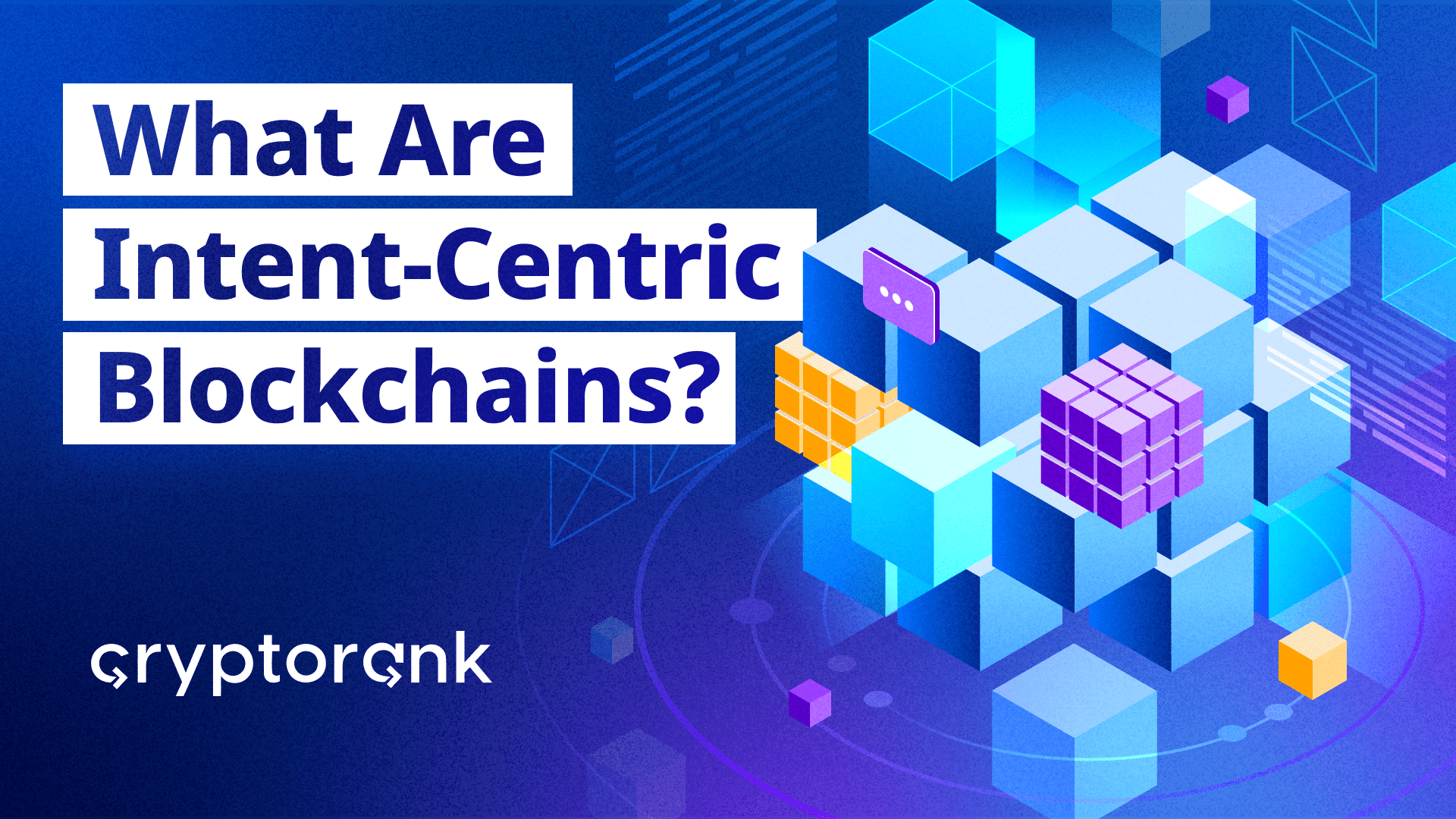The Rise of Intent‑Centric Blockchains: How a new approach makes blockchains easier, faster, and more private

Introduction
If you’ve ever used a normal blockchain, you know the drill: pick your network, set your gas fee, build your transaction step by step, and hope it doesn’t fail. Intent‑centric blockchains flip this script. Instead of telling the network how to do something, you simply tell it what you want, then let the protocol figure out the rest.
This shift—pioneered by projects like Anoma—promises smoother user experiences, true atomic swaps across chains, built‑in privacy, and easier developer tools. In this 1,000‑word guide, we’ll:
- Explain the core idea behind intent‑centric architectures in plain English.
- Show real examples where intent semantics make a difference.
- Highlight the developer ecosystem that’s growing around these new networks.
By the end, you’ll see why “just express your intent and let the network handle it” could be the next big step for Web3.
1. Technical Deep Dive: From Transactions to Intents
Traditional Blockchains: A Step‑By‑Step Recipe
On most blockchains today (like Ethereum), you must describe each step in detail:
- Choose a smart contract: Where your code lives.
- Specify inputs: Which function you’re calling and with what data.
- Set gas fees: Decide how much you’re willing to pay.
- Submit the transaction: Wait for miners or validators to include it.
- Handle errors: If something goes wrong, you troubleshoot and try again.
Every action—whether swapping tokens, sending a message, or minting an NFT—follows this pattern.
Intent‑Centric Blockchains: Saying “I Want” vs. “Do This”
Intent‑centric chains change that. You don’t tell the network the how. You tell it the what:
- Intent example: “Swap 2 ETH for the best possible amount of USDC, and do it privately.”
- Network response: It finds another user or liquidity pool, bundles everything into one atomic operation, handles gas optimization, and completes the swap—without you fiddling with each step.
Key components:
- Intent Pool: A shared “bulletin board” where users post their intents.
- Solvers: Specialized nodes that match compatible intents (e.g., someone wanting ETH→USDC with someone offering USDC→ETH).
- Atomic Settlement: Once a match is found, the network executes everything at once—or not at all—so there’s no risk of half‑completed trades.
- Privacy Layers: Intent details can stay hidden until execution, keeping your plans confidential.
By shifting the work from users to the network, intent‑centric designs aim to make blockchain interactions feel as easy as sending a normal HTTP request.
2. Use‑Case Spotlight: Where Intents Shine
Intent semantics aren’t just a cool idea—they solve real pains:
A. Cross‑Chain Atomic Swaps
- Old way: You’d send tokens to a bridge contract, wait for confirmation, then claim your assets on the other chain. Often slow, with multiple transactions and timing risks.
- With intents: You declare “I want to swap BTC on Chain A for ETH on Chain B.” Solvers handle the bridging, matching, and message passing behind the scenes. Result: one smooth, all‑or‑nothing trade.
B. Privacy‑Preserving Transactions
- Old way: Every transaction is public. Anyone can trace your wallet and see amounts, recipients, and timing.
- With intents: You post an encrypted intent like “Transfer 50 DAI to Alice, but don’t reveal details until settlement.” The network only reveals necessary bits when the transaction executes, protecting your privacy by default.
C. Programmable Escrow & Barter
- Old way: Complex multi‑party deals need custom smart contracts. You must code edge cases, audit your contract, then hope it works.
- With intents: You say “I’ll give 10 NFTs to Bob if and only if he sends me 5 ETH.” A solver picks up that intent, holds both assets in a temporary escrow, and executes the swap once both sides are ready—no extra coding required.
D. AI‑Driven Optimizations
- Old way: You set a gas price and pray.
- With intents: You express “Execute this trade with the lowest gas cost that still confirms within two minutes.” Solvers run mini‑auctions or use off‑chain data to pick the best path, then bundle your intent into a single transaction for you.
These examples show how intent semantics turn multi‑step, error‑prone sequences into simple “I want X” commands—making DeFi, NFTs, and cross‑chain interactions friendlier.
3. Developer Ecosystem: Building on Intent‑Centric Networks
Intent‑centric blockchains need new tools and frameworks. Here’s what’s available today:
1. Juvix
A high‑level language where you describe intents directly. Instead of writing sequential smart‑contract calls, you write intent declarations—Juvix handles the compilation down to intent pools and solver interactions.
2. Intent SDKs & APIs
- TypeScript & Python libraries that let web or mobile apps post intents with a few lines of code.
- Built‑in helpers for cross‑chain messaging, privacy flags, and gas optimization.
3. Node Sidecars & Plugins
For networks like Ethereum or Cosmos-based chains, you can run an “intent sidecar” alongside your normal node. It takes care of gossiping intents, matching, and settlement, without modifying the core blockchain.
4. Solver Frameworks
Open‑source projects let you run solver agents—bots that watch intent pools, look for matches, and earn fees by executing successful intent pairings. Becoming a solver can be as simple as spinning up a Docker container.
5. Community Grants & Hackathons
Projects like Anoma have set up $25 million grant funds and regular hackathons to encourage apps—from privacy wallets to cross‑chain DEX interfaces—that use intent primitives.
This growing ecosystem means developers can start building on intent‑centric chains today, using familiar tools and languages, but with the power of high‑level intent semantics under the hood.
4. Comparing Traditional vs. Intent‑Centric Models
| Aspect | Traditional Chains | Intent‑Centric Chains |
|---|---|---|
| User Effort | High: manual steps & gas fees | Low: post intent, network does rest |
| Cross‑Chain Trades | Multiple transactions/bridges | Single atomic intent |
| Privacy | Public by default | Encrypted until execution |
| Developer Workload | Write & audit smart contracts | Declare intents, skip boilerplate |
| Composability | Limited within one chain | Native multi‑chain matching |
Conclusion
Intent‑centric blockchains represent a new way to think about decentralized applications. By moving from “send this transaction” to “I want this outcome,” they:
- Simplify the user experience, hiding complexity like gas management and bridging.
- Enable true atomic, cross‑chain operations that were previously clunky or risky.
- Offer built‑in privacy, so users don’t have to rely on separate mixers or shielded chains.
- Lower developer barriers, letting teams express business logic in high‑level intents rather than low‑level code.
While still early, the intent‑centric movement is already backed by growing tooling, active grant programs, and real‑world demos. If you’ve ever felt frustrated by manual blockchain workflows, this new paradigm could be the breakthrough that makes Web3 feel more like using a modern app—simple, powerful, and built around your needs.
Internal Mitosis Links & Glossary References
- Bitcoin
- Blockchain
- Cryptocurrency
- Mitosis Core: https://university.mitosis.org/mitosis-core
- Governance: https://university.mitosis.org/governance
- Glossary: https://university.mitosis.org/glossary/
- Ecosystem Connections: https://university.mitosis.org/ecosystem-connections



Comments ()